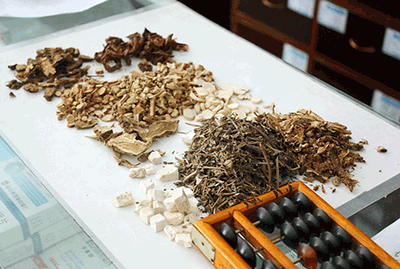Plants have long been recognized for their pharmacological properties as evidenced by the extensive use of herbal medicines and tonics by many indigenous cultures. The earliest documentation of herb-based treatments appeared in Shen Nong Ben Cao Jing (The Divine Farmer’s Materia Medica) in 2737 BC. Despite a long history of herbal remedies, the scientific basis underpinning their efficacy in treating various maladies is lacking. Except for a limited number of successful cases, individual compounds isolated from their host species often lack expected therapeutic activities, a phenomenon previously attributed to matrix effect. In traditional Chinese herbal medicine, a prescription typically consists of a handful of ingredients mixed in a given ratio, whereas many of these ingredients are indeed referred to as efficacy-enhancing ingredients. Using a combination of quantitative metabolomics, mathematics, analytic chemistry, genomics and biochemistry, we decipher the molecular mechanisms underlying the matrix effect of traditional herbal remedies. We believe this project will potentially provide new systems-level insights into disease mechanisms, and further instruct new therapies of complex diseases through personalized cocktail medicine.
The chemical complexity of plant food is enormous and underexplored. Every plant species produces a unique array of secondary metabolites, while omnivores like humans need to distill chemical cues from a diverse assortment of potential plant foods to inform their digestive and immune systems. Several potential phytochemical pattern recognition mechanisms can be hypothesized: 1) A small number of receptors specifically perceive a small number of plant specialized metabolites that triggers downstream pathways to promote allergic response; 2) A number of promiscuous receptors can respond to common structural features of major classes of plant specialized metabolites (e.g. alkaloids or sulfur-containing metabolites); 3) It’s also possible that multiple receptors need to be co-activated by a blend of phytochemicals to activate the immune responses. As a partnership lab of the Food Allergy Science Initiative (FASI), we are interested in elucidating such recognition mechanisms in the human gastrointestinal tract and their connections to food allergy.

A prescription of Chinese herbal medicine being filled in Beijing. (Source: http://jimmiescollage.com)

